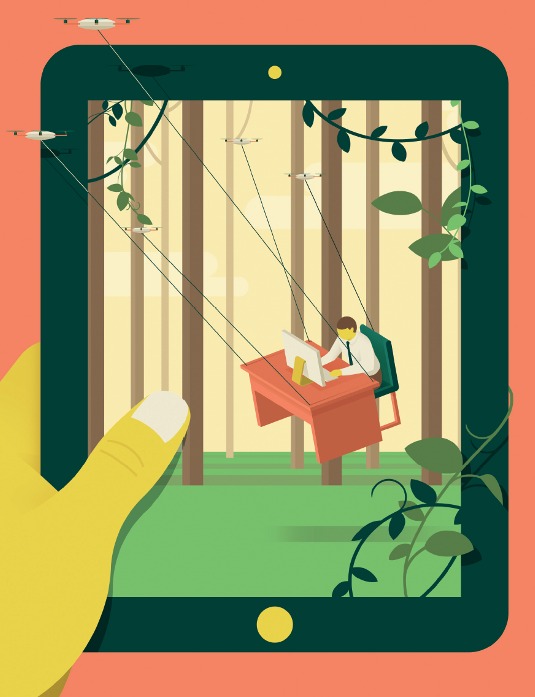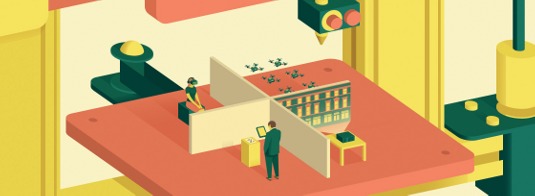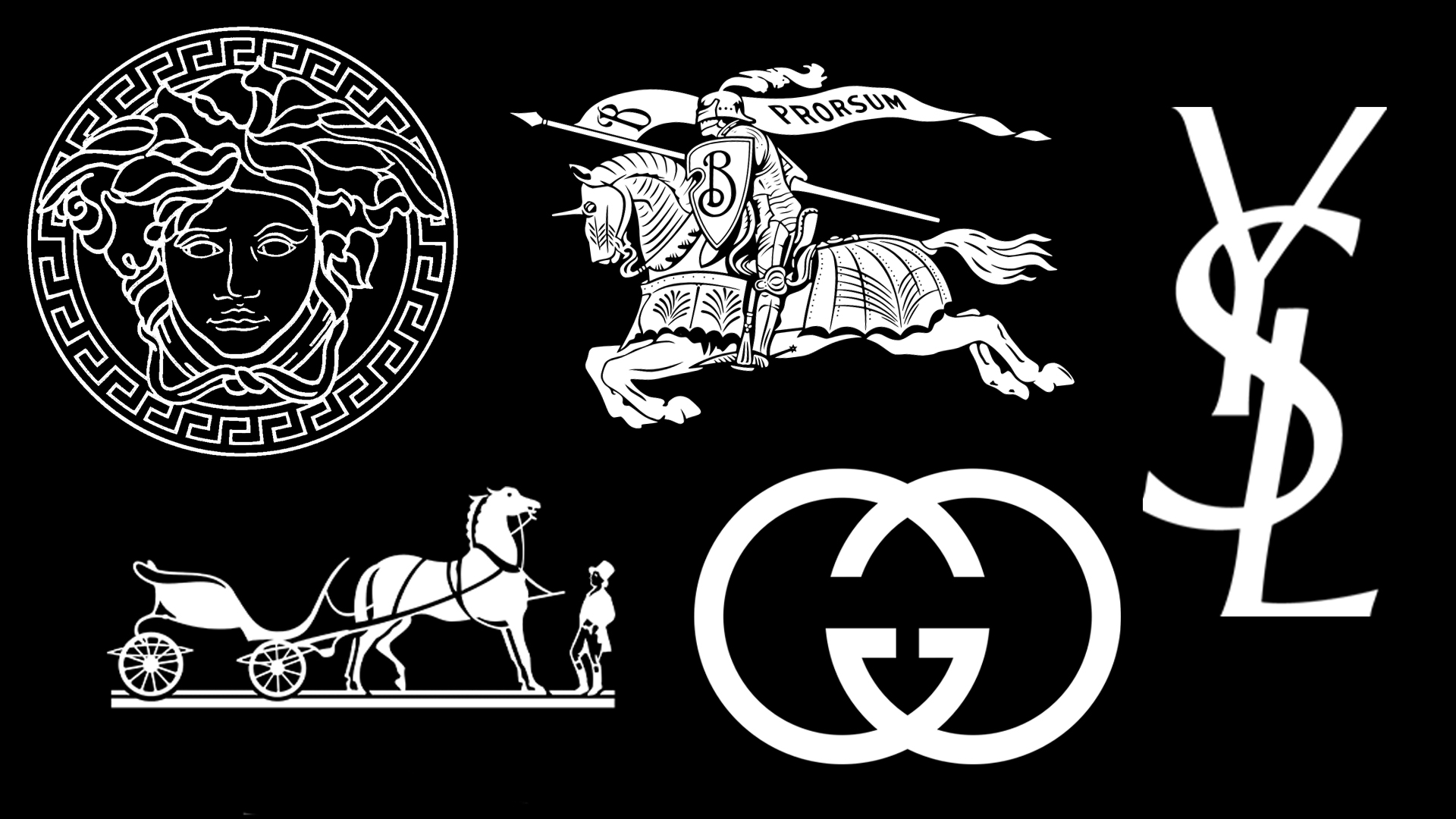Get more from emerging technology
We explore how new tech like 3D printing, 4D projection mapping, and VR immersion can enhance your output.

As exciting as the potential of cutting-edge technology may be, it's easy to feel cynical when thinking about how to actually use it in your work. It doesn't help when the technology sector is a cacophony of buzzwords. 3D printing, 4D projection mapping and VR immersion may all sound cool, but how we use these innovations in campaigns, and to satisfy clients, is another story.
As the rate at which we create new technologies is increasing, so is the visibility of new software and devices. Open-source networks and funding platforms like Kickstarter and Indiegogo enable creators to launch new tech in beta, giving designs more publicity at a much earlier stage of development.
This double-pronged scenario of better technology and higher visibility means that new practices are often found hovering just out of the reach of designers. The latest technology can be quickly written off by clients as unreliable, buggy, or – worst of all – gimmicky.
The role of designers in testing new products is pivotal in discovering their most human uses. "Generally, designers are not looking for the latest and greatest, but the most solid, appropriate and relevant," says creative digital strategist Daljit Singh. "The designer and their new tools will define the future of business and communication. Their ability to spot the best methods – that is, the most significant and relevant – is fundamentally unchallenged."
Placing the focus on humanity is absolutely key, believes Singh. The most compelling campaigns don't try to wow us with tech prowess, but instead talk to people in a meaningful way.
March of the drones
It was this sense of humanity that international ad agency CHI & Partners had in mind when it created its swarm project for the Lexus 'Amazing in Motion' campaign. Lexus teamed up with KMEL robotics to create the ad's tiny 'quadcopters', which take on human characteristics as they explore Tokyo.
"The objective was to reposition the brand in a way that allows people to understand the backbone of what Lexus is really about – without showing cars," says Chad Warner, digital creative director of CHI & Partners. "Crucially, it was all about using technology that had a very human element to it."
Daily design news, reviews, how-tos and more, as picked by the editors.
"We took what would normally be lifeless, algorithmic drones and put a soul behind them," Warner continues. "What we liked about the drones was this challenge of making them human. They can't talk, make noises or express themselves in any other way besides motion. They had to have the attributes of playfulness that are typically not in computerised things."
Sound and vision
Making technology fit within a specific environment is a common obstacle for agencies experimenting with new techniques, and it's an issue that Drive, a UK-based agency that specialises in projection mapping, is used to dealing with. Since it was founded in 2004, Drive has projected media onto Battersea Power Station for Bombay Sapphire, inside the V&A for Bulgari, and onto the Peterhof Palace in St Petersburg for delegates at the G20 Summit. Drive's use of 4D projection mapping means that its creations can be site-specific, working with the unique dimensions of a building so it appears to come to life.
Jim Hudson, Drive's production director, is tasked with delivering these experiences to brands. He believes that the strength of 4D projection mapping lies in its ability to create a spectacle. "It's all about creating experiences that drive brand loyalty," he explains. "Consumers feel like they're getting these one-off immersive experiences, whether that's in person or online. So as a form of advertising, the efficacy of the technology is growing."
The sense of spectacle in Drive's work makes audiences keen to share the productions on social media – something that must delight clients. "The fact that the results can then be shared is integral to the whole thing," says Hudson. "For instance, our projection mapping project for Ralph Lauren Polo went viral in 187 countries and resulted in 45,000 online store visits."
Progressions in power consumption and image quality mean that this medium is becoming more accessible. Combine this with the availability of big data – which can enable brands to tailor experiences to people's likes and dislikes – and the outlook becomes even more exciting, as Hudson points out. Consider the potential of a projection-mapping installation that could respond to someone's character profile.
But tech for its own sake is invariably a bad idea. "There's often too much focus on the practical implications of technology, and not enough on how we can treat it as art, ambience or background noise, or make it more emotional," cautions Jonathan Chippindale, CEO of Holition, a studio specialising in augmented reality.
At the technology's current stage in development, this approach feels sensible. Although the potential of AR is great, some early experiments have been clunky. Both Topshop and Uniqlo have experimented with AR fitting rooms that enable visitors to try on virtual garments, but the renderings have struggled to accurately replicate the textures and movement of clothing. Holition's approach is more intellectual.
For London Fashion Week, Holition collaborated with London College of Fashion to create a series of AR experiences to amplify the impact of its graduate master collections. For example, Join The Front Row was a show invitation that became an animation, using AR technology. When the recipient of the card pointed their phone at the invitation, a miniature catwalk show began on the surface of the invitation.
Another concept fused the disciplines of fashion and art, where a collection based on the Garden of Eden sprouted leaves and vines when the user looked at it through a tablet. "The AR content overlaid the collection, creating a vignette where the real and unreal became blurred," says Chippindale.

"The whip to spur the horse on is the creative; the technology is often the reins that pull us back," Chippindale adds. "The key is not to think about the technology, as technologists always come at things in a rational way. There is always a healthy friction within our office between creatives and technologists."
The key to using these new techniques to their best potential lies in recognising their limits. 3D printing currently feels like the most significant – and most over-hyped – technology about to make its way into the lives of consumers.
Nicholas O'Donnell-Hoare, design partner of multidisciplinary design consultancy Saint H, specialises in 3D printing and the programmes that support it. His approach is concerned not just with the potential of 3D printing, but how its limitations can be overcome.
"We want to reduce the barriers that currently stop users from engaging in 3D printing," he says. "The hype is still sky-high, which is good for exposure, but there have been some key points that have been missing. These missing points are key to bringing the technology to a real state of accessibility."
O'Donnell-Hoare believes that many brands are missing the point of 3D printing as they try to shoehorn it into existing industries, without considering the practical benefit. "Fashion brands seem hell-bent on incorporating 3D printing into shows, but it's not that appropriate. It doesn't lend itself to making fabrics as well as traditional methods of weaving do," he says. "However, inspiration can be taken from this. Car manufacturers have devised ways to create 3D knits that hold their shape, and can be used to create lightweight car seats."

Saint H uses 3D printing to improve on established designs by cutting down on the waste created by many traditional manufacturing methods. "We are moving it over to more accessible, less wasteful techniques that resonate with eco-conscious consumers," he says. "Most importantly, these products demonstrate the strengths of 3D printing in new contexts, rather than using the technology for its own futuristic credentials."
Virtual reality has been one of the most visible futuristic technologies since American visionary Jaron Lanier coined the term in the mid-80s. The idea has seen a resurgence with the advent of the Oculus Rift headset, which made headlines for its Facebook buyout in March this year. Although commonly used to enhance gaming, the Rift also has the potential to create highly immersive commercial campaigns.
Topshop recently used the Oculus Rift in a campaign that enabled fans to experience the brand's latest runway show virtually. The strength of the campaign lay in the decision to showcase the product itself – the headsets were placed in the brand's flagship store window so that passers-by could observe them. According to Phil Harper, head of digital at Atlantic Productions, the future this medium depends on the experiences that the technology is capable of delivering.
"Campaigns where we use the Rift as a novelty have a very short lifespan. The idea that people will queue up again like they did in the 90s to put one of these things on is unlikely," Harper says. "We are interested in this because it's going to hit the market in a big way. The technology is there and it's cheap enough. Once people put these on and realise the kind of experience they can get for $250, I'm hard-pressed to understand how they will want to go back to 16" by 9" screens."
Atlantic Productions is working on a project that will enable people to explore the history of life on earth, beginning with single-cell organisms. The immersive capabilities of the Rift mean that creators can play with scale. "People will be able to shrink down to the size of a piece of plankton, or grow so they can swim next to a blue whale," says Harper.
Bespoke and human
The key tenets that we can draw from these innovators are less complicated than we might expect. The simplest is to do with storytelling. As more brands begin to collaborate with thought-leaders and technologists to create their ads, the endeavour behind them becomes interesting in its own right.
Documentaries exploring the making of these commercials help to maximise the stories behind them, creating a value beyond that of selling the product, and drawing attention to the level of ingenuity involved. As consumers share these stories on social media, they generate their own momentum. Drive Productions creates events that occur once, but have a much longer lifespan as attendees will tweet, Instagram and post about them on Facebook.

New technologies also have the potential to satisfy our growing need for personalisation. O'Donnel-Hoare believes that when 3D printing becomes more commonplace, those who design and print custom products will take more ownership over these items, compared to the people who still chose to buy items in-store or online. This will become true of experiences, too. The more unique and personal your installation or event can be to each viewer or attendee, the more memorable it will become. As Hudson notes, the advent of big data will continue to make this more possible as time goes on.
However, the most important message to bear in mind when dealing with new technology was flagged up in author Simon Sinek's famous TED talk in 2009: every designer and business must start with the 'why' rather than the 'what' when designing a product or campaign. This is something that Silicon Valley is rather notorious for getting wrong.
Before considering the use of any new technology, it is vital to interrogate why you are using it. If it isn't creating human connections and moments of serendipity, it needs to be looked at again. In short, make technology less about technology, and more about humanity.
Words: Peter Firth Illustrations: Donghyun Lim
Peter is senior journalist and technology editor at The Future Laboratory's trends network, LS:N Global. He tracks shift s across the network's 14 lifestyle sectors. This article originally appeared in Computer Arts issue 228.

Thank you for reading 5 articles this month* Join now for unlimited access
Enjoy your first month for just £1 / $1 / €1
*Read 5 free articles per month without a subscription

Join now for unlimited access
Try first month for just £1 / $1 / €1

The Creative Bloq team is made up of a group of art and design enthusiasts, and has changed and evolved since Creative Bloq began back in 2012. The current website team consists of eight full-time members of staff: Editor Georgia Coggan, Deputy Editor Rosie Hilder, Ecommerce Editor Beren Neale, Senior News Editor Daniel Piper, Editor, Digital Art and 3D Ian Dean, Tech Reviews Editor Erlingur Einarsson, Ecommerce Writer Beth Nicholls and Staff Writer Natalie Fear, as well as a roster of freelancers from around the world. The ImagineFX magazine team also pitch in, ensuring that content from leading digital art publication ImagineFX is represented on Creative Bloq.
